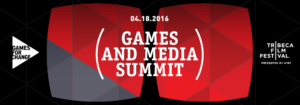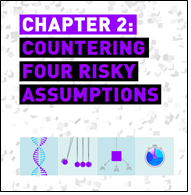Based on your feedback, we are pleased to release an updated report for download. (There have been more than 5,000 downloads in the first year of our report, “Impact with Games: A Fragmented Field,” according to ETC Press, our publisher.) This includes our new chapter 2: countering four risky assumptions (also published separately).
Many meaningful comments were received after our initial launch. (Thank you!) Some responses (both ours and others) we weighed and chose not to incorporate into the final report. These include the temptation to pick sides. For example, several people asked us to weigh in on “which genres have more impact.” While this may be a fascinating debate, there are benefits to deliberately stepping back, not picking a side — seeking to frame that conversation rather than join in specific debates.
We also tabled some suggested solutions that turned out to concern other problems (not fragmentation). These include:
- Why the market is tough — this is true, and limited resources do aggravate fragmentation, but this report is more concerned with how we talk past each other about impact (whereas the feedback we heard in this area was mostly about how it is hard to get paid doing good work, which is a significant but separate concern)
- More games need evaluation — this may be true, but our focus is on research that advances the whole field, rather than pushing for evaluation for every single game
- Several wanted to “measure engagement” as a proxy for multiple kinds of impact — which is an important strategy, and something we may get to in future reports; but it is less a clear sign of fragmentation (and so is less relevant for this report). We hope to investigate such opportunities in future reports.
We did take action to make several SUBSTANTIVE CHANGES in response to feedback. First, we introduced a new chapter on “Countering Four Risky Assumptions.” The idea is to identify some hidden causes, related to practical development processes, that might contribute to fragmentation across the board and to propose counter approaches. We specifically challenged the assumptions that:
Second, we made our language more consistent throughout. For example, around “social impact games” vs “impact” — we decided to be more consistent, and refer to the set of possible games as “social impact games” (a broad umbrella, with the main criteria being they were designed for an impact, or else are being studied as having an impact), and secondarily to discuss “impact” in multiple forms.
Sincerely,
Benjamin, Aubrey and Gerad (on behalf of the editorial team)



